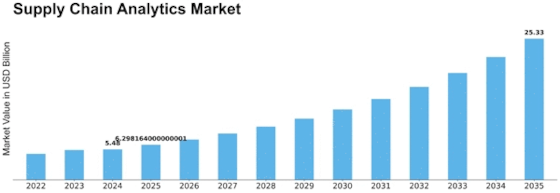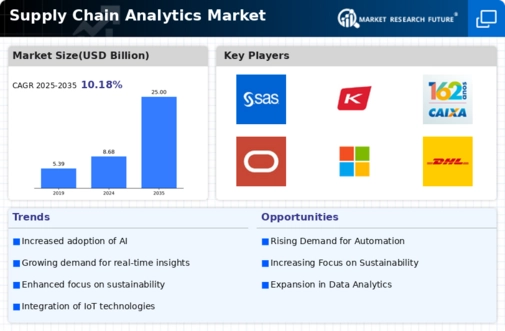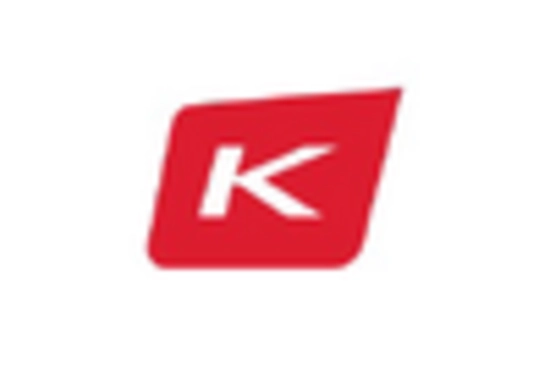-
FACTOR ANALYSIS
-
\r\n\r\n\r\nValue chain Analysis
-
\r\n\r\n\r\nPorter's
-
Five Forces Analysis
-
\r\n\r\n\r\nBargaining Power of Suppliers
-
\r\n\r\n\r\nBargaining
-
Power of Buyers
-
\r\n\r\n\r\nThreat of New Entrants
-
\r\n\r\n\r\nThreat
-
of Substitutes
-
\r\n\r\n\r\nIntensity of Rivalry
-
\r\n\r\n\r\n\r\n\r\nCOVID-19
-
Impact Analysis
-
\r\n\r\n\r\nMarket Impact Analysis
-
\r\n\r\n\r\nRegional
-
Impact
-
\r\n\r\n\r\nOpportunity and Threat Analysis
-
\r\n\r\n\r\n\r\n\r\n\r\n\r\n
-
\r\n
-
\r\n\r\n\r\nSupply
-
Chain Analytics Market, BY Component (USD Billion)
-
\r\n\r\n\r\nSoftware
-
\r\n\r\n\r\nServices
-
\r\n\r\n\r\nHardware
-
\r\n\r\n\r\n\r\n\r\nSupply
-
Chain Analytics Market, BY Deployment Type (USD Billion)
-
\r\n\r\n\r\nOn-Premises
-
\r\n\r\n\r\nCloud
-
\r\n\r\n\r\n\r\n\r\nSupply
-
Chain Analytics Market, BY Application (USD Billion)
-
\r\n\r\n\r\nInventory
-
Management
-
\r\n\r\n\r\nDemand Forecasting
-
\r\n\r\n\r\nSupplier
-
Management
-
\r\n\r\n\r\nOrder Management
-
\r\n\r\n\r\n\r\n\r\nSupply
-
Chain Analytics Market, BY End Use Industry (USD Billion)
-
\r\n\r\n\r\nRetail
-
\r\n\r\n\r\nManufacturing
-
\r\n\r\n\r\nLogistics
-
\r\n\r\n\r\nHealthcare
-
\r\n\r\n\r\n\r\n\r\nSupply
-
Chain Analytics Market, BY Regional (USD Billion)
-
\r\n\r\n\r\nNorth
-
America
-
\r\n\r\n\r\nUS
-
\r\n\r\n\r\nCanada
-
\r\n\r\n\r\n\r\n\r\nEurope
-
\r\n\r\n\r\nGermany
-
\r\n\r\n\r\nUK
-
\r\n\r\n\r\nFrance
-
\r\n\r\n\r\nRussia
-
\r\n\r\n\r\nItaly
-
\r\n\r\n\r\nSpain
-
\r\n\r\n\r\nRest
-
of Europe
-
\r\n\r\n\r\n\r\n\r\nAPAC
-
\r\n\r\n\r\nChina
-
\r\n\r\n\r\nIndia
-
\r\n\r\n\r\nJapan
-
\r\n\r\n\r\nSouth
-
Korea
-
\r\n\r\n\r\nMalaysia
-
\r\n\r\n\r\nThailand
-
\r\n\r\n\r\nIndonesia
-
\r\n\r\n\r\nRest
-
of APAC
-
\r\n\r\n\r\n\r\n\r\nSouth America
-
\r\n\r\n\r\nBrazil
-
\r\n\r\n\r\nMexico
-
\r\n\r\n\r\nArgentina
-
\r\n\r\n\r\nRest
-
of South America
-
\r\n\r\n\r\n\r\n\r\nMEA
-
\r\n\r\n\r\nGCC
-
Countries
-
\r\n\r\n\r\nSouth Africa
-
\r\n\r\n\r\nRest
-
of MEA
-
\r\n\r\n\r\n\r\n\r\n\r\n\r\n
-
\r\n
-
\r\n\r\n\r\nCompetitive
-
Landscape
-
\r\n\r\n\r\nOverview
-
\r\n\r\n\r\nCompetitive
-
Analysis
-
\r\n\r\n\r\nMarket share Analysis
-
\r\n\r\n\r\nMajor
-
Growth Strategy in the Supply Chain Analytics Market
-
\r\n\r\n\r\nCompetitive
-
Benchmarking
-
\r\n\r\n\r\nLeading Players in Terms of Number of Developments
-
in the Supply Chain Analytics Market
-
\r\n\r\n\r\nKey developments
-
and growth strategies
-
\r\n\r\n\r\nNew Product Launch/Service Deployment
-
\r\n\r\n\r\nMerger
-
& Acquisitions
-
\r\n\r\n\r\nJoint Ventures
-
\r\n\r\n\r\n\r\n\r\nMajor
-
Players Financial Matrix
-
\r\n\r\n\r\nSales and Operating Income
-
\r\n\r\n\r\nMajor
-
Players R&D Expenditure. 2023
-
\r\n\r\n\r\n\r\n\r\n\r\n\r\nCompany
-
Profiles
-
\r\n\r\n\r\nIBM
-
\r\n\r\n\r\nFinancial
-
Overview
-
\r\n\r\n\r\nProducts Offered
-
\r\n\r\n\r\nKey
-
Developments
-
\r\n\r\n\r\nSWOT Analysis
-
\r\n\r\n\r\nKey
-
Strategies
-
\r\n\r\n\r\n\r\n\r\nInfor
-
\r\n\r\n\r\nFinancial
-
Overview
-
\r\n\r\n\r\nProducts Offered
-
\r\n\r\n\r\nKey
-
Developments
-
\r\n\r\n\r\nSWOT Analysis
-
\r\n\r\n\r\nKey
-
Strategies
-
\r\n\r\n\r\n\r\n\r\nQAD
-
\r\n\r\n\r\nFinancial
-
Overview
-
\r\n\r\n\r\nProducts Offered
-
\r\n\r\n\r\nKey
-
Developments
-
\r\n\r\n\r\nSWOT Analysis
-
\r\n\r\n\r\nKey
-
Strategies
-
\r\n\r\n\r\n\r\n\r\nSAP
-
\r\n\r\n\r\nFinancial
-
Overview
-
\r\n\r\n\r\nProducts Offered
-
\r\n\r\n\r\nKey
-
Developments
-
\r\n\r\n\r\nSWOT Analysis
-
\r\n\r\n\r\nKey
-
Strategies
-
\r\n\r\n\r\n\r\n\r\nAdditive Manufacturing Technologies
-
\r\n\r\n\r\nFinancial
-
Overview
-
\r\n\r\n\r\nProducts Offered
-
\r\n\r\n\r\nKey
-
Developments
-
\r\n\r\n\r\nSWOT Analysis
-
\r\n\r\n\r\nKey
-
Strategies
-
\r\n\r\n\r\n\r\n\r\nLlamasoft
-
\r\n\r\n\r\nFinancial
-
Overview
-
\r\n\r\n\r\nProducts Offered
-
\r\n\r\n\r\nKey
-
Developments
-
\r\n\r\n\r\nSWOT Analysis
-
\r\n\r\n\r\nKey
-
Strategies
-
\r\n\r\n\r\n\r\n\r\nBlue Yonder
-
\r\n\r\n\r\nFinancial
-
Overview
-
\r\n\r\n\r\nProducts Offered
-
\r\n\r\n\r\nKey
-
Developments
-
\r\n\r\n\r\nSWOT Analysis
-
\r\n\r\n\r\nKey
-
Strategies
-
\r\n\r\n\r\n\r\n\r\nKinaxis
-
\r\n\r\n\r\nFinancial
-
Overview
-
\r\n\r\n\r\nProducts Offered
-
\r\n\r\n\r\nKey
-
Developments
-
\r\n\r\n\r\nSWOT Analysis
-
\r\n\r\n\r\nKey
-
Strategies
-
\r\n\r\n\r\n\r\n\r\nMicrosoft
-
\r\n\r\n\r\nFinancial
-
Overview
-
\r\n\r\n\r\nProducts Offered
-
\r\n\r\n\r\nKey
-
Developments
-
\r\n\r\n\r\nSWOT Analysis
-
\r\n\r\n\r\nKey
-
Strategies
-
\r\n\r\n\r\n\r\n\r\nManhattan Associates
-
\r\n\r\n\r\nFinancial
-
Overview
-
\r\n\r\n\r\nProducts Offered
-
\r\n\r\n\r\nKey
-
Developments
-
\r\n\r\n\r\nSWOT Analysis
-
\r\n\r\n\r\nKey
-
Strategies
-
\r\n\r\n\r\n\r\n\r\nTomTom
-
\r\n\r\n\r\nFinancial
-
Overview
-
\r\n\r\n\r\nProducts Offered
-
\r\n\r\n\r\nKey
-
Developments
-
\r\n\r\n\r\nSWOT Analysis
-
\r\n\r\n\r\nKey
-
Strategies
-
\r\n\r\n\r\n\r\n\r\nSAS Institute
-
\r\n\r\n\r\nFinancial
-
Overview
-
\r\n\r\n\r\nProducts Offered
-
\r\n\r\n\r\nKey
-
Developments
-
\r\n\r\n\r\nSWOT Analysis
-
\r\n\r\n\r\nKey
-
Strategies
-
\r\n\r\n\r\n\r\n\r\nC3.ai
-
\r\n\r\n\r\nFinancial
-
Overview
-
\r\n\r\n\r\nProducts Offered
-
\r\n\r\n\r\nKey
-
Developments
-
\r\n\r\n\r\nSWOT Analysis
-
\r\n\r\n\r\nKey
-
Strategies
-
\r\n\r\n\r\n\r\n\r\nSiemens
-
\r\n\r\n\r\nFinancial
-
Overview
-
\r\n\r\n\r\nProducts Offered
-
\r\n\r\n\r\nKey
-
Developments
-
\r\n\r\n\r\nSWOT Analysis
-
\r\n\r\n\r\nKey
-
Strategies
-
\r\n\r\n\r\n\r\n\r\nOracle
-
\r\n\r\n\r\nFinancial
-
Overview
-
\r\n\r\n\r\nProducts Offered
-
\r\n\r\n\r\nKey
-
Developments
-
\r\n\r\n\r\nSWOT Analysis
-
\r\n\r\n\r\nKey
-
Strategies
-
\r\n\r\n\r\n\r\n\r\n\r\n\r\nAppendix
-
\r\n\r\n\r\nReferences
-
\r\n\r\n\r\nRelated
-
Reports
-
\r\n\r\n\r\n\r\n\r\nLIST Of tables
-
\r\n
-
\r\n\r\n\r\nLIST
-
OF ASSUMPTIONS
-
\r\n\r\n\r\nNorth America Supply Chain Analytics Market
-
SIZE ESTIMATES & FORECAST, BY COMPONENT, 2019-2035 (USD Billions)
-
\r\n\r\n\r\nNorth
-
America Supply Chain Analytics Market SIZE ESTIMATES & FORECAST, BY DEPLOYMENT
-
TYPE, 2019-2035 (USD Billions)
-
\r\n\r\n\r\nNorth America Supply Chain
-
Analytics Market SIZE ESTIMATES & FORECAST, BY APPLICATION, 2019-2035 (USD Billions)
-
\r\n\r\n\r\nNorth
-
America Supply Chain Analytics Market SIZE ESTIMATES & FORECAST, BY END USE
-
INDUSTRY, 2019-2035 (USD Billions)
-
\r\n\r\n\r\nNorth America Supply
-
Chain Analytics Market SIZE ESTIMATES & FORECAST, BY REGIONAL, 2019-2035 (USD
-
Billions)
-
\r\n\r\n\r\nUS Supply Chain Analytics Market SIZE ESTIMATES
-
& FORECAST, BY COMPONENT, 2019-2035 (USD Billions)
-
\r\n\r\n\r\nUS
-
Supply Chain Analytics Market SIZE ESTIMATES & FORECAST, BY DEPLOYMENT TYPE,
-
\r\n\r\n\r\nUS Supply Chain Analytics Market
-
SIZE ESTIMATES & FORECAST, BY APPLICATION, 2019-2035 (USD Billions)
-
\r\n\r\n\r\nUS
-
Supply Chain Analytics Market SIZE ESTIMATES & FORECAST, BY END USE INDUSTRY,
-
\r\n\r\n\r\nUS Supply Chain Analytics Market
-
SIZE ESTIMATES & FORECAST, BY REGIONAL, 2019-2035 (USD Billions)
-
\r\n\r\n\r\nCanada
-
Supply Chain Analytics Market SIZE ESTIMATES & FORECAST, BY COMPONENT, 2019-2035
-
(USD Billions)
-
\r\n\r\n\r\nCanada Supply Chain Analytics Market SIZE
-
ESTIMATES & FORECAST, BY DEPLOYMENT TYPE, 2019-2035 (USD Billions)
-
\r\n\r\n\r\nCanada
-
Supply Chain Analytics Market SIZE ESTIMATES & FORECAST, BY APPLICATION, 2019-2035
-
(USD Billions)
-
\r\n\r\n\r\nCanada Supply Chain Analytics Market SIZE
-
ESTIMATES & FORECAST, BY END USE INDUSTRY, 2019-2035 (USD Billions)
-
\r\n\r\n\r\nCanada
-
Supply Chain Analytics Market SIZE ESTIMATES & FORECAST, BY REGIONAL, 2019-2035
-
(USD Billions)
-
\r\n\r\n\r\nEurope Supply Chain Analytics Market SIZE
-
ESTIMATES & FORECAST, BY COMPONENT, 2019-2035 (USD Billions)
-
\r\n\r\n\r\nEurope
-
Supply Chain Analytics Market SIZE ESTIMATES & FORECAST, BY DEPLOYMENT TYPE,
-
\r\n\r\n\r\nEurope Supply Chain Analytics
-
Market SIZE ESTIMATES & FORECAST, BY APPLICATION, 2019-2035 (USD Billions)
-
\r\n\r\n\r\nEurope
-
Supply Chain Analytics Market SIZE ESTIMATES & FORECAST, BY END USE INDUSTRY,
-
\r\n\r\n\r\nEurope Supply Chain Analytics
-
Market SIZE ESTIMATES & FORECAST, BY REGIONAL, 2019-2035 (USD Billions)
-
\r\n\r\n\r\nGermany
-
Supply Chain Analytics Market SIZE ESTIMATES & FORECAST, BY COMPONENT, 2019-2035
-
(USD Billions)
-
\r\n\r\n\r\nGermany Supply Chain Analytics Market
-
SIZE ESTIMATES & FORECAST, BY DEPLOYMENT TYPE, 2019-2035 (USD Billions)
-
\r\n\r\n\r\nGermany
-
Supply Chain Analytics Market SIZE ESTIMATES & FORECAST, BY APPLICATION, 2019-2035
-
(USD Billions)
-
\r\n\r\n\r\nGermany Supply Chain Analytics Market
-
SIZE ESTIMATES & FORECAST, BY END USE INDUSTRY, 2019-2035 (USD Billions)
-
\r\n\r\n\r\nGermany
-
Supply Chain Analytics Market SIZE ESTIMATES & FORECAST, BY REGIONAL, 2019-2035
-
(USD Billions)
-
\r\n\r\n\r\nUK Supply Chain Analytics Market SIZE
-
ESTIMATES & FORECAST, BY COMPONENT, 2019-2035 (USD Billions)
-
\r\n\r\n\r\nUK
-
Supply Chain Analytics Market SIZE ESTIMATES & FORECAST, BY DEPLOYMENT TYPE,
-
\r\n\r\n\r\nUK Supply Chain Analytics Market
-
SIZE ESTIMATES & FORECAST, BY APPLICATION, 2019-2035 (USD Billions)
-
\r\n\r\n\r\nUK
-
Supply Chain Analytics Market SIZE ESTIMATES & FORECAST, BY END USE INDUSTRY,
-
\r\n\r\n\r\nUK Supply Chain Analytics Market
-
SIZE ESTIMATES & FORECAST, BY REGIONAL, 2019-2035 (USD Billions)
-
\r\n\r\n\r\nFrance
-
Supply Chain Analytics Market SIZE ESTIMATES & FORECAST, BY COMPONENT, 2019-2035
-
(USD Billions)
-
\r\n\r\n\r\nFrance Supply Chain Analytics Market SIZE
-
ESTIMATES & FORECAST, BY DEPLOYMENT TYPE, 2019-2035 (USD Billions)
-
\r\n\r\n\r\nFrance
-
Supply Chain Analytics Market SIZE ESTIMATES & FORECAST, BY APPLICATION, 2019-2035
-
(USD Billions)
-
\r\n\r\n\r\nFrance Supply Chain Analytics Market SIZE
-
ESTIMATES & FORECAST, BY END USE INDUSTRY, 2019-2035 (USD Billions)
-
\r\n\r\n\r\nFrance
-
Supply Chain Analytics Market SIZE ESTIMATES & FORECAST, BY REGIONAL, 2019-2035
-
(USD Billions)
-
\r\n\r\n\r\nRussia Supply Chain Analytics Market SIZE
-
ESTIMATES & FORECAST, BY COMPONENT, 2019-2035 (USD Billions)
-
\r\n\r\n\r\nRussia
-
Supply Chain Analytics Market SIZE ESTIMATES & FORECAST, BY DEPLOYMENT TYPE,
-
\r\n\r\n\r\nRussia Supply Chain Analytics
-
Market SIZE ESTIMATES & FORECAST, BY APPLICATION, 2019-2035 (USD Billions)
-
\r\n\r\n\r\nRussia
-
Supply Chain Analytics Market SIZE ESTIMATES & FORECAST, BY END USE INDUSTRY,
-
\r\n\r\n\r\nRussia Supply Chain Analytics
-
Market SIZE ESTIMATES & FORECAST, BY REGIONAL, 2019-2035 (USD Billions)
-
\r\n\r\n\r\nItaly
-
Supply Chain Analytics Market SIZE ESTIMATES & FORECAST, BY COMPONENT, 2019-2035
-
(USD Billions)
-
\r\n\r\n\r\nItaly Supply Chain Analytics Market SIZE
-
ESTIMATES & FORECAST, BY DEPLOYMENT TYPE, 2019-2035 (USD Billions)
-
\r\n\r\n\r\nItaly
-
Supply Chain Analytics Market SIZE ESTIMATES & FORECAST, BY APPLICATION, 2019-2035
-
(USD Billions)
-
\r\n\r\n\r\nItaly Supply Chain Analytics Market SIZE
-
ESTIMATES & FORECAST, BY END USE INDUSTRY, 2019-2035 (USD Billions)
-
\r\n\r\n\r\nItaly
-
Supply Chain Analytics Market SIZE ESTIMATES & FORECAST, BY REGIONAL, 2019-2035
-
(USD Billions)
-
\r\n\r\n\r\nSpain Supply Chain Analytics Market SIZE
-
ESTIMATES & FORECAST, BY COMPONENT, 2019-2035 (USD Billions)
-
\r\n\r\n\r\nSpain
-
Supply Chain Analytics Market SIZE ESTIMATES & FORECAST, BY DEPLOYMENT TYPE,
-
\r\n\r\n\r\nSpain Supply Chain Analytics
-
Market SIZE ESTIMATES & FORECAST, BY APPLICATION, 2019-2035 (USD Billions)
-
\r\n\r\n\r\nSpain
-
Supply Chain Analytics Market SIZE ESTIMATES & FORECAST, BY END USE INDUSTRY,
-
\r\n\r\n\r\nSpain Supply Chain Analytics
-
Market SIZE ESTIMATES & FORECAST, BY REGIONAL, 2019-2035 (USD Billions)
-
\r\n\r\n\r\nRest
-
of Europe Supply Chain Analytics Market SIZE ESTIMATES & FORECAST, BY COMPONENT,
-
\r\n\r\n\r\nRest of Europe Supply Chain
-
Analytics Market SIZE ESTIMATES & FORECAST, BY DEPLOYMENT TYPE, 2019-2035 (USD
-
Billions)
-
\r\n\r\n\r\nRest of Europe Supply Chain Analytics Market
-
SIZE ESTIMATES & FORECAST, BY APPLICATION, 2019-2035 (USD Billions)
-
\r\n\r\n\r\nRest
-
of Europe Supply Chain Analytics Market SIZE ESTIMATES & FORECAST, BY END USE
-
INDUSTRY, 2019-2035 (USD Billions)
-
\r\n\r\n\r\nRest of Europe Supply
-
Chain Analytics Market SIZE ESTIMATES & FORECAST, BY REGIONAL, 2019-2035 (USD
-
Billions)
-
\r\n\r\n\r\nAPAC Supply Chain Analytics Market SIZE ESTIMATES
-
& FORECAST, BY COMPONENT, 2019-2035 (USD Billions)
-
\r\n\r\n\r\nAPAC
-
Supply Chain Analytics Market SIZE ESTIMATES & FORECAST, BY DEPLOYMENT TYPE,
-
\r\n\r\n\r\nAPAC Supply Chain Analytics
-
Market SIZE ESTIMATES & FORECAST, BY APPLICATION, 2019-2035 (USD Billions)
-
\r\n\r\n\r\nAPAC
-
Supply Chain Analytics Market SIZE ESTIMATES & FORECAST, BY END USE INDUSTRY,
-
\r\n\r\n\r\nAPAC Supply Chain Analytics
-
Market SIZE ESTIMATES & FORECAST, BY REGIONAL, 2019-2035 (USD Billions)
-
\r\n\r\n\r\nChina
-
Supply Chain Analytics Market SIZE ESTIMATES & FORECAST, BY COMPONENT, 2019-2035
-
(USD Billions)
-
\r\n\r\n\r\nChina Supply Chain Analytics Market SIZE
-
ESTIMATES & FORECAST, BY DEPLOYMENT TYPE, 2019-2035 (USD Billions)
-
\r\n\r\n\r\nChina
-
Supply Chain Analytics Market SIZE ESTIMATES & FORECAST, BY APPLICATION, 2019-2035
-
(USD Billions)
-
\r\n\r\n\r\nChina Supply Chain Analytics Market SIZE
-
ESTIMATES & FORECAST, BY END USE INDUSTRY, 2019-2035 (USD Billions)
-
\r\n\r\n\r\nChina
-
Supply Chain Analytics Market SIZE ESTIMATES & FORECAST, BY REGIONAL, 2019-2035
-
(USD Billions)
-
\r\n\r\n\r\nIndia Supply Chain Analytics Market SIZE
-
ESTIMATES & FORECAST, BY COMPONENT, 2019-2035 (USD Billions)
-
\r\n\r\n\r\nIndia
-
Supply Chain Analytics Market SIZE ESTIMATES & FORECAST, BY DEPLOYMENT TYPE,
-
\r\n\r\n\r\nIndia Supply Chain Analytics
-
Market SIZE ESTIMATES & FORECAST, BY APPLICATION, 2019-2035 (USD Billions)
-
\r\n\r\n\r\nIndia
-
Supply Chain Analytics Market SIZE ESTIMATES & FORECAST, BY END USE INDUSTRY,
-
\r\n\r\n\r\nIndia Supply Chain Analytics
-
Market SIZE ESTIMATES & FORECAST, BY REGIONAL, 2019-2035 (USD Billions)
-
\r\n\r\n\r\nJapan
-
Supply Chain Analytics Market SIZE ESTIMATES & FORECAST, BY COMPONENT, 2019-2035
-
(USD Billions)
-
\r\n\r\n\r\nJapan Supply Chain Analytics Market SIZE
-
ESTIMATES & FORECAST, BY DEPLOYMENT TYPE, 2019-2035 (USD Billions)
-
\r\n\r\n\r\nJapan
-
Supply Chain Analytics Market SIZE ESTIMATES & FORECAST, BY APPLICATION, 2019-2035
-
(USD Billions)
-
\r\n\r\n\r\nJapan Supply Chain Analytics Market SIZE
-
ESTIMATES & FORECAST, BY END USE INDUSTRY, 2019-2035 (USD Billions)
-
\r\n\r\n\r\nJapan
-
Supply Chain Analytics Market SIZE ESTIMATES & FORECAST, BY REGIONAL, 2019-2035
-
(USD Billions)
-
\r\n\r\n\r\nSouth Korea Supply Chain Analytics Market
-
SIZE ESTIMATES & FORECAST, BY COMPONENT, 2019-2035 (USD Billions)
-
\r\n\r\n\r\nSouth
-
Korea Supply Chain Analytics Market SIZE ESTIMATES & FORECAST, BY DEPLOYMENT
-
TYPE, 2019-2035 (USD Billions)
-
\r\n\r\n\r\nSouth Korea Supply Chain
-
Analytics Market SIZE ESTIMATES & FORECAST, BY APPLICATION, 2019-2035 (USD Billions)
-
\r\n\r\n\r\nSouth
-
Korea Supply Chain Analytics Market SIZE ESTIMATES & FORECAST, BY END USE INDUSTRY,
-
\r\n\r\n\r\nSouth Korea Supply Chain Analytics
-
Market SIZE ESTIMATES & FORECAST, BY REGIONAL, 2019-2035 (USD Billions)
-
\r\n\r\n\r\nMalaysia
-
Supply Chain Analytics Market SIZE ESTIMATES & FORECAST, BY COMPONENT, 2019-2035
-
(USD Billions)
-
\r\n\r\n\r\nMalaysia Supply Chain Analytics Market
-
SIZE ESTIMATES & FORECAST, BY DEPLOYMENT TYPE, 2019-2035 (USD Billions)
-
\r\n\r\n\r\nMalaysia
-
Supply Chain Analytics Market SIZE ESTIMATES & FORECAST, BY APPLICATION, 2019-2035
-
(USD Billions)
-
\r\n\r\n\r\nMalaysia Supply Chain Analytics Market
-
SIZE ESTIMATES & FORECAST, BY END USE INDUSTRY, 2019-2035 (USD Billions)
-
\r\n\r\n\r\nMalaysia
-
Supply Chain Analytics Market SIZE ESTIMATES & FORECAST, BY REGIONAL, 2019-2035
-
(USD Billions)
-
\r\n\r\n\r\nThailand Supply Chain Analytics Market
-
SIZE ESTIMATES & FORECAST, BY COMPONENT, 2019-2035 (USD Billions)
-
\r\n\r\n\r\nThailand
-
Supply Chain Analytics Market SIZE ESTIMATES & FORECAST, BY DEPLOYMENT TYPE,
-
\r\n\r\n\r\nThailand Supply Chain Analytics
-
Market SIZE ESTIMATES & FORECAST, BY APPLICATION, 2019-2035 (USD Billions)
-
\r\n\r\n\r\nThailand
-
Supply Chain Analytics Market SIZE ESTIMATES & FORECAST, BY END USE INDUSTRY,
-
\r\n\r\n\r\nThailand Supply Chain Analytics
-
Market SIZE ESTIMATES & FORECAST, BY REGIONAL, 2019-2035 (USD Billions)
-
\r\n\r\n\r\nIndonesia
-
Supply Chain Analytics Market SIZE ESTIMATES & FORECAST, BY COMPONENT, 2019-2035
-
(USD Billions)
-
\r\n\r\n\r\nIndonesia Supply Chain Analytics Market
-
SIZE ESTIMATES & FORECAST, BY DEPLOYMENT TYPE, 2019-2035 (USD Billions)
-
\r\n\r\n\r\nIndonesia
-
Supply Chain Analytics Market SIZE ESTIMATES & FORECAST, BY APPLICATION, 2019-2035
-
(USD Billions)
-
\r\n\r\n\r\nIndonesia Supply Chain Analytics Market
-
SIZE ESTIMATES & FORECAST, BY END USE INDUSTRY, 2019-2035 (USD Billions)
-
\r\n\r\n\r\nIndonesia
-
Supply Chain Analytics Market SIZE ESTIMATES & FORECAST, BY REGIONAL, 2019-2035
-
(USD Billions)
-
\r\n\r\n\r\nRest of APAC Supply Chain Analytics Market
-
SIZE ESTIMATES & FORECAST, BY COMPONENT, 2019-2035 (USD Billions)
-
\r\n\r\n\r\nRest
-
of APAC Supply Chain Analytics Market SIZE ESTIMATES & FORECAST, BY DEPLOYMENT
-
TYPE, 2019-2035 (USD Billions)
-
\r\n\r\n\r\nRest of APAC Supply Chain
-
Analytics Market SIZE ESTIMATES & FORECAST, BY APPLICATION, 2019-2035 (USD Billions)
-
\r\n\r\n\r\nRest
-
of APAC Supply Chain Analytics Market SIZE ESTIMATES & FORECAST, BY END USE
-
INDUSTRY, 2019-2035 (USD Billions)
-
\r\n\r\n\r\nRest of APAC Supply
-
Chain Analytics Market SIZE ESTIMATES & FORECAST, BY REGIONAL, 2019-2035 (USD
-
Billions)
-
\r\n\r\n\r\nSouth America Supply Chain Analytics Market
-
SIZE ESTIMATES & FORECAST, BY COMPONENT, 2019-2035 (USD Billions)
-
\r\n\r\n\r\nSouth
-
America Supply Chain Analytics Market SIZE ESTIMATES & FORECAST, BY DEPLOYMENT
-
TYPE, 2019-2035 (USD Billions)
-
\r\n\r\n\r\nSouth America Supply Chain
-
Analytics Market SIZE ESTIMATES & FORECAST, BY APPLICATION, 2019-2035 (USD Billions)
-
\r\n\r\n\r\nSouth
-
America Supply Chain Analytics Market SIZE ESTIMATES & FORECAST, BY END USE
-
INDUSTRY, 2019-2035 (USD Billions)
-
\r\n\r\n\r\nSouth America Supply
-
Chain Analytics Market SIZE ESTIMATES & FORECAST, BY REGIONAL, 2019-2035 (USD
-
Billions)
-
\r\n\r\n\r\nBrazil Supply Chain Analytics Market SIZE ESTIMATES
-
& FORECAST, BY COMPONENT, 2019-2035 (USD Billions)
-
\r\n\r\n\r\nBrazil
-
Supply Chain Analytics Market SIZE ESTIMATES & FORECAST, BY DEPLOYMENT TYPE,
-
\r\n\r\n\r\nBrazil Supply Chain Analytics
-
Market SIZE ESTIMATES & FORECAST, BY APPLICATION, 2019-2035 (USD Billions)
-
\r\n\r\n\r\nBrazil
-
Supply Chain Analytics Market SIZE ESTIMATES & FORECAST, BY END USE INDUSTRY,
-
\r\n\r\n\r\nBrazil Supply Chain Analytics
-
Market SIZE ESTIMATES & FORECAST, BY REGIONAL, 2019-2035 (USD Billions)
-
\r\n\r\n\r\nMexico
-
Supply Chain Analytics Market SIZE ESTIMATES & FORECAST, BY COMPONENT, 2019-2035
-
(USD Billions)
-
\r\n\r\n\r\nMexico Supply Chain Analytics Market SIZE
-
ESTIMATES & FORECAST, BY DEPLOYMENT TYPE, 2019-2035 (USD Billions)
-
\r\n\r\n\r\nMexico
-
Supply Chain Analytics Market SIZE ESTIMATES & FORECAST, BY APPLICATION, 2019-2035
-
(USD Billions)
-
\r\n\r\n\r\nMexico Supply Chain Analytics Market SIZE
-
ESTIMATES & FORECAST, BY END USE INDUSTRY, 2019-2035 (USD Billions)
-
\r\n\r\n\r\nMexico
-
Supply Chain Analytics Market SIZE ESTIMATES & FORECAST, BY REGIONAL, 2019-2035
-
(USD Billions)
-
\r\n\r\n\r\nArgentina Supply Chain Analytics Market
-
SIZE ESTIMATES & FORECAST, BY COMPONENT, 2019-2035 (USD Billions)
-
\r\n\r\n\r\nArgentina
-
Supply Chain Analytics Market SIZE ESTIMATES & FORECAST, BY DEPLOYMENT TYPE,
-
\r\n\r\n\r\nArgentina Supply Chain Analytics
-
Market SIZE ESTIMATES & FORECAST, BY APPLICATION, 2019-2035 (USD Billions)
-
\r\n\r\n\r\nArgentina
-
Supply Chain Analytics Market SIZE ESTIMATES & FORECAST, BY END USE INDUSTRY,
-
\r\n\r\n\r\nArgentina Supply Chain Analytics
-
Market SIZE ESTIMATES & FORECAST, BY REGIONAL, 2019-2035 (USD Billions)
-
\r\n\r\n\r\nRest
-
of South America Supply Chain Analytics Market SIZE ESTIMATES & FORECAST, BY
-
COMPONENT, 2019-2035 (USD Billions)
-
\r\n\r\n\r\nRest of South America
-
Supply Chain Analytics Market SIZE ESTIMATES & FORECAST, BY DEPLOYMENT TYPE,
-
\r\n\r\n\r\nRest of South America Supply
-
Chain Analytics Market SIZE ESTIMATES & FORECAST, BY APPLICATION, 2019-2035
-
(USD Billions)
-
\r\n\r\n\r\nRest of South America Supply Chain Analytics
-
Market SIZE ESTIMATES & FORECAST, BY END USE INDUSTRY, 2019-2035 (USD Billions)
-
\r\n\r\n\r\nRest
-
of South America Supply Chain Analytics Market SIZE ESTIMATES & FORECAST, BY
-
REGIONAL, 2019-2035 (USD Billions)
-
\r\n\r\n\r\nMEA Supply Chain Analytics
-
Market SIZE ESTIMATES & FORECAST, BY COMPONENT, 2019-2035 (USD Billions)
-
\r\n\r\n\r\nMEA
-
Supply Chain Analytics Market SIZE ESTIMATES & FORECAST, BY DEPLOYMENT TYPE,
-
\r\n\r\n\r\nMEA Supply Chain Analytics Market
-
SIZE ESTIMATES & FORECAST, BY APPLICATION, 2019-2035 (USD Billions)
-
\r\n\r\n\r\nMEA
-
Supply Chain Analytics Market SIZE ESTIMATES & FORECAST, BY END USE INDUSTRY,
-
\r\n\r\n\r\nMEA Supply Chain Analytics Market
-
SIZE ESTIMATES & FORECAST, BY REGIONAL, 2019-2035 (USD Billions)
-
\r\n\r\n\r\nGCC
-
Countries Supply Chain Analytics Market SIZE ESTIMATES & FORECAST, BY COMPONENT,
-
\r\n\r\n\r\nGCC Countries Supply Chain Analytics
-
Market SIZE ESTIMATES & FORECAST, BY DEPLOYMENT TYPE, 2019-2035 (USD Billions)
-
\r\n\r\n\r\nGCC
-
Countries Supply Chain Analytics Market SIZE ESTIMATES & FORECAST, BY APPLICATION,
-
\r\n\r\n\r\nGCC Countries Supply Chain Analytics
-
Market SIZE ESTIMATES & FORECAST, BY END USE INDUSTRY, 2019-2035 (USD Billions)
-
\r\n\r\n\r\nGCC
-
Countries Supply Chain Analytics Market SIZE ESTIMATES & FORECAST, BY REGIONAL,
-
\r\n\r\n\r\nSouth Africa Supply Chain Analytics
-
Market SIZE ESTIMATES & FORECAST, BY COMPONENT, 2019-2035 (USD Billions)
-
\r\n\r\n\r\nSouth
-
Africa Supply Chain Analytics Market SIZE ESTIMATES & FORECAST, BY DEPLOYMENT
-
TYPE, 2019-2035 (USD Billions)
-
\r\n\r\n\r\nSouth Africa Supply Chain
-
Analytics Market SIZE ESTIMATES & FORECAST, BY APPLICATION, 2019-2035 (USD Billions)
-
\r\n\r\n\r\nSouth
-
Africa Supply Chain Analytics Market SIZE ESTIMATES & FORECAST, BY END USE INDUSTRY,
-
\r\n\r\n\r\nSouth Africa Supply Chain Analytics
-
Market SIZE ESTIMATES & FORECAST, BY REGIONAL, 2019-2035 (USD Billions)
-
\r\n\r\n\r\nRest
-
of MEA Supply Chain Analytics Market SIZE ESTIMATES & FORECAST, BY COMPONENT,
-
\r\n\r\n\r\nRest of MEA Supply Chain Analytics
-
Market SIZE ESTIMATES & FORECAST, BY DEPLOYMENT TYPE, 2019-2035 (USD Billions)
-
\r\n\r\n\r\nRest
-
of MEA Supply Chain Analytics Market SIZE ESTIMATES & FORECAST, BY APPLICATION,
-
\r\n\r\n\r\nRest of MEA Supply Chain Analytics
-
Market SIZE ESTIMATES & FORECAST, BY END USE INDUSTRY, 2019-2035 (USD Billions)
-
\r\n\r\n\r\nRest
-
of MEA Supply Chain Analytics Market SIZE ESTIMATES & FORECAST, BY REGIONAL,
-
\r\n\r\n\r\nPRODUCT LAUNCH/PRODUCT DEVELOPMENT/APPROVAL
-
\r\n\r\n\r\nACQUISITION/PARTNERSHIP
-
\r\n\r\n\r\n
-
\r\n
-
\r\n
-
\r\n
-
\r\n
-
\r\n
-
\r\n
-
\r\n
-
\r\n
-
\r\n
-
\r\n
-
\r\n
-
\r\n
-
\r\n
-
\r\n
-
\r\n
-
\r\n
-
\r\n
-
\r\n
-
\r\n
-
\r\n
-
\r\n
-
\r\n
-
\r\n
-
\r\n
-
\r\n
-
\r\n
-
\r\n
-
\r\n
-
\r\nLIST
-
Of figures
-
\r\n
-
\r\n\r\n\r\nMARKET SYNOPSIS
-
\r\n\r\n\r\nNORTH
-
AMERICA SUPPLY CHAIN ANALYTICS MARKET ANALYSIS
-
\r\n\r\n\r\nUS SUPPLY
-
CHAIN ANALYTICS MARKET ANALYSIS BY COMPONENT
-
\r\n\r\n\r\nUS SUPPLY
-
CHAIN ANALYTICS MARKET ANALYSIS BY DEPLOYMENT TYPE
-
\r\n\r\n\r\nUS
-
SUPPLY CHAIN ANALYTICS MARKET ANALYSIS BY APPLICATION
-
\r\n\r\n\r\nUS
-
SUPPLY CHAIN ANALYTICS MARKET ANALYSIS BY END USE INDUSTRY
-
\r\n\r\n\r\nUS
-
SUPPLY CHAIN ANALYTICS MARKET ANALYSIS BY REGIONAL
-
\r\n\r\n\r\nCANADA
-
SUPPLY CHAIN ANALYTICS MARKET ANALYSIS BY COMPONENT
-
\r\n\r\n\r\nCANADA
-
SUPPLY CHAIN ANALYTICS MARKET ANALYSIS BY DEPLOYMENT TYPE
-
\r\n\r\n\r\nCANADA
-
SUPPLY CHAIN ANALYTICS MARKET ANALYSIS BY APPLICATION
-
\r\n\r\n\r\nCANADA
-
SUPPLY CHAIN ANALYTICS MARKET ANALYSIS BY END USE INDUSTRY
-
\r\n\r\n\r\nCANADA
-
SUPPLY CHAIN ANALYTICS MARKET ANALYSIS BY REGIONAL
-
\r\n\r\n\r\nEUROPE
-
SUPPLY CHAIN ANALYTICS MARKET ANALYSIS
-
\r\n\r\n\r\nGERMANY SUPPLY
-
CHAIN ANALYTICS MARKET ANALYSIS BY COMPONENT
-
\r\n\r\n\r\nGERMANY
-
SUPPLY CHAIN ANALYTICS MARKET ANALYSIS BY DEPLOYMENT TYPE
-
\r\n\r\n\r\nGERMANY
-
SUPPLY CHAIN ANALYTICS MARKET ANALYSIS BY APPLICATION
-
\r\n\r\n\r\nGERMANY
-
SUPPLY CHAIN ANALYTICS MARKET ANALYSIS BY END USE INDUSTRY
-
\r\n\r\n\r\nGERMANY
-
SUPPLY CHAIN ANALYTICS MARKET ANALYSIS BY REGIONAL
-
\r\n\r\n\r\nUK
-
SUPPLY CHAIN ANALYTICS MARKET ANALYSIS BY COMPONENT
-
\r\n\r\n\r\nUK
-
SUPPLY CHAIN ANALYTICS MARKET ANALYSIS BY DEPLOYMENT TYPE
-
\r\n\r\n\r\nUK
-
SUPPLY CHAIN ANALYTICS MARKET ANALYSIS BY APPLICATION
-
\r\n\r\n\r\nUK
-
SUPPLY CHAIN ANALYTICS MARKET ANALYSIS BY END USE INDUSTRY
-
\r\n\r\n\r\nUK
-
SUPPLY CHAIN ANALYTICS MARKET ANALYSIS BY REGIONAL
-
\r\n\r\n\r\nFRANCE
-
SUPPLY CHAIN ANALYTICS MARKET ANALYSIS BY COMPONENT
-
\r\n\r\n\r\nFRANCE
-
SUPPLY CHAIN ANALYTICS MARKET ANALYSIS BY DEPLOYMENT TYPE
-
\r\n\r\n\r\nFRANCE
-
SUPPLY CHAIN ANALYTICS MARKET ANALYSIS BY APPLICATION
-
\r\n\r\n\r\nFRANCE
-
SUPPLY CHAIN ANALYTICS MARKET ANALYSIS BY END USE INDUSTRY
-
\r\n\r\n\r\nFRANCE
-
SUPPLY CHAIN ANALYTICS MARKET ANALYSIS BY REGIONAL
-
\r\n\r\n\r\nRUSSIA
-
SUPPLY CHAIN ANALYTICS MARKET ANALYSIS BY COMPONENT
-
\r\n\r\n\r\nRUSSIA
-
SUPPLY CHAIN ANALYTICS MARKET ANALYSIS BY DEPLOYMENT TYPE
-
\r\n\r\n\r\nRUSSIA
-
SUPPLY CHAIN ANALYTICS MARKET ANALYSIS BY APPLICATION
-
\r\n\r\n\r\nRUSSIA
-
SUPPLY CHAIN ANALYTICS MARKET ANALYSIS BY END USE INDUSTRY
-
\r\n\r\n\r\nRUSSIA
-
SUPPLY CHAIN ANALYTICS MARKET ANALYSIS BY REGIONAL
-
\r\n\r\n\r\nITALY
-
SUPPLY CHAIN ANALYTICS MARKET ANALYSIS BY COMPONENT
-
\r\n\r\n\r\nITALY
-
SUPPLY CHAIN ANALYTICS MARKET ANALYSIS BY DEPLOYMENT TYPE
-
\r\n\r\n\r\nITALY
-
SUPPLY CHAIN ANALYTICS MARKET ANALYSIS BY APPLICATION
-
\r\n\r\n\r\nITALY
-
SUPPLY CHAIN ANALYTICS MARKET ANALYSIS BY END USE INDUSTRY
-
\r\n\r\n\r\nITALY
-
SUPPLY CHAIN ANALYTICS MARKET ANALYSIS BY REGIONAL
-
\r\n\r\n\r\nSPAIN
-
SUPPLY CHAIN ANALYTICS MARKET ANALYSIS BY COMPONENT
-
\r\n\r\n\r\nSPAIN
-
SUPPLY CHAIN ANALYTICS MARKET ANALYSIS BY DEPLOYMENT TYPE
-
\r\n\r\n\r\nSPAIN
-
SUPPLY CHAIN ANALYTICS MARKET ANALYSIS BY APPLICATION
-
\r\n\r\n\r\nSPAIN
-
SUPPLY CHAIN ANALYTICS MARKET ANALYSIS BY END USE INDUSTRY
-
\r\n\r\n\r\nSPAIN
-
SUPPLY CHAIN ANALYTICS MARKET ANALYSIS BY REGIONAL
-
\r\n\r\n\r\nREST
-
OF EUROPE SUPPLY CHAIN ANALYTICS MARKET ANALYSIS BY COMPONENT
-
\r\n\r\n\r\nREST
-
OF EUROPE SUPPLY CHAIN ANALYTICS MARKET ANALYSIS BY DEPLOYMENT TYPE
-
\r\n\r\n\r\nREST
-
OF EUROPE SUPPLY CHAIN ANALYTICS MARKET ANALYSIS BY APPLICATION
-
\r\n\r\n\r\nREST
-
OF EUROPE SUPPLY CHAIN ANALYTICS MARKET ANALYSIS BY END USE INDUSTRY
-
\r\n\r\n\r\nREST
-
OF EUROPE SUPPLY CHAIN ANALYTICS MARKET ANALYSIS BY REGIONAL
-
\r\n\r\n\r\nAPAC
-
SUPPLY CHAIN ANALYTICS MARKET ANALYSIS
-
\r\n\r\n\r\nCHINA SUPPLY CHAIN
-
ANALYTICS MARKET ANALYSIS BY COMPONENT
-
\r\n\r\n\r\nCHINA SUPPLY CHAIN
-
ANALYTICS MARKET ANALYSIS BY DEPLOYMENT TYPE
-
\r\n\r\n\r\nCHINA SUPPLY
-
CHAIN ANALYTICS MARKET ANALYSIS BY APPLICATION
-
\r\n\r\n\r\nCHINA
-
SUPPLY CHAIN ANALYTICS MARKET ANALYSIS BY END USE INDUSTRY
-
\r\n\r\n\r\nCHINA
-
SUPPLY CHAIN ANALYTICS MARKET ANALYSIS BY REGIONAL
-
\r\n\r\n\r\nINDIA
-
SUPPLY CHAIN ANALYTICS MARKET ANALYSIS BY COMPONENT
-
\r\n\r\n\r\nINDIA
-
SUPPLY CHAIN ANALYTICS MARKET ANALYSIS BY DEPLOYMENT TYPE
-
\r\n\r\n\r\nINDIA
-
SUPPLY CHAIN ANALYTICS MARKET ANALYSIS BY APPLICATION
-
\r\n\r\n\r\nINDIA
-
SUPPLY CHAIN ANALYTICS MARKET ANALYSIS BY END USE INDUSTRY
-
\r\n\r\n\r\nINDIA
-
SUPPLY CHAIN ANALYTICS MARKET ANALYSIS BY REGIONAL
-
\r\n\r\n\r\nJAPAN
-
SUPPLY CHAIN ANALYTICS MARKET ANALYSIS BY COMPONENT
-
\r\n\r\n\r\nJAPAN
-
SUPPLY CHAIN ANALYTICS MARKET ANALYSIS BY DEPLOYMENT TYPE
-
\r\n\r\n\r\nJAPAN
-
SUPPLY CHAIN ANALYTICS MARKET ANALYSIS BY APPLICATION
-
\r\n\r\n\r\nJAPAN
-
SUPPLY CHAIN ANALYTICS MARKET ANALYSIS BY END USE INDUSTRY
-
\r\n\r\n\r\nJAPAN
-
SUPPLY CHAIN ANALYTICS MARKET ANALYSIS BY REGIONAL
-
\r\n\r\n\r\nSOUTH
-
KOREA SUPPLY CHAIN ANALYTICS MARKET ANALYSIS BY COMPONENT
-
\r\n\r\n\r\nSOUTH
-
KOREA SUPPLY CHAIN ANALYTICS MARKET ANALYSIS BY DEPLOYMENT TYPE
-
\r\n\r\n\r\nSOUTH
-
KOREA SUPPLY CHAIN ANALYTICS MARKET ANALYSIS BY APPLICATION
-
\r\n\r\n\r\nSOUTH
-
KOREA SUPPLY CHAIN ANALYTICS MARKET ANALYSIS BY END USE INDUSTRY
-
\r\n\r\n\r\nSOUTH
-
KOREA SUPPLY CHAIN ANALYTICS MARKET ANALYSIS BY REGIONAL
-
\r\n\r\n\r\nMALAYSIA
-
SUPPLY CHAIN ANALYTICS MARKET ANALYSIS BY COMPONENT
-
\r\n\r\n\r\nMALAYSIA
-
SUPPLY CHAIN ANALYTICS MARKET ANALYSIS BY DEPLOYMENT TYPE
-
\r\n\r\n\r\nMALAYSIA
-
SUPPLY CHAIN ANALYTICS MARKET ANALYSIS BY APPLICATION
-
\r\n\r\n\r\nMALAYSIA
-
SUPPLY CHAIN ANALYTICS MARKET ANALYSIS BY END USE INDUSTRY
-
\r\n\r\n\r\nMALAYSIA
-
SUPPLY CHAIN ANALYTICS MARKET ANALYSIS BY REGIONAL
-
\r\n\r\n\r\nTHAILAND
-
SUPPLY CHAIN ANALYTICS MARKET ANALYSIS BY COMPONENT
-
\r\n\r\n\r\nTHAILAND
-
SUPPLY CHAIN ANALYTICS MARKET ANALYSIS BY DEPLOYMENT TYPE
-
\r\n\r\n\r\nTHAILAND
-
SUPPLY CHAIN ANALYTICS MARKET ANALYSIS BY APPLICATION
-
\r\n\r\n\r\nTHAILAND
-
SUPPLY CHAIN ANALYTICS MARKET ANALYSIS BY END USE INDUSTRY
-
\r\n\r\n\r\nTHAILAND
-
SUPPLY CHAIN ANALYTICS MARKET ANALYSIS BY REGIONAL
-
\r\n\r\n\r\nINDONESIA
-
SUPPLY CHAIN ANALYTICS MARKET ANALYSIS BY COMPONENT
-
\r\n\r\n\r\nINDONESIA
-
SUPPLY CHAIN ANALYTICS MARKET ANALYSIS BY DEPLOYMENT TYPE
-
\r\n\r\n\r\nINDONESIA
-
SUPPLY CHAIN ANALYTICS MARKET ANALYSIS BY APPLICATION
-
\r\n\r\n\r\nINDONESIA
-
SUPPLY CHAIN ANALYTICS MARKET ANALYSIS BY END USE INDUSTRY
-
\r\n\r\n\r\nINDONESIA
-
SUPPLY CHAIN ANALYTICS MARKET ANALYSIS BY REGIONAL
-
\r\n\r\n\r\nREST
-
OF APAC SUPPLY CHAIN ANALYTICS MARKET ANALYSIS BY COMPONENT
-
\r\n\r\n\r\nREST
-
OF APAC SUPPLY CHAIN ANALYTICS MARKET ANALYSIS BY DEPLOYMENT TYPE
-
\r\n\r\n\r\nREST
-
OF APAC SUPPLY CHAIN ANALYTICS MARKET ANALYSIS BY APPLICATION
-
\r\n\r\n\r\nREST
-
OF APAC SUPPLY CHAIN ANALYTICS MARKET ANALYSIS BY END USE INDUSTRY
-
\r\n\r\n\r\nREST
-
OF APAC SUPPLY CHAIN ANALYTICS MARKET ANALYSIS BY REGIONAL
-
\r\n\r\n\r\nSOUTH
-
AMERICA SUPPLY CHAIN ANALYTICS MARKET ANALYSIS
-
\r\n\r\n\r\nBRAZIL
-
SUPPLY CHAIN ANALYTICS MARKET ANALYSIS BY COMPONENT
-
\r\n\r\n\r\nBRAZIL
-
SUPPLY CHAIN ANALYTICS MARKET ANALYSIS BY DEPLOYMENT TYPE
-
\r\n\r\n\r\nBRAZIL
-
SUPPLY CHAIN ANALYTICS MARKET ANALYSIS BY APPLICATION
-
\r\n\r\n\r\nBRAZIL
-
SUPPLY CHAIN ANALYTICS MARKET ANALYSIS BY END USE INDUSTRY
-
\r\n\r\n\r\nBRAZIL
-
SUPPLY CHAIN ANALYTICS MARKET ANALYSIS BY REGIONAL
-
\r\n\r\n\r\nMEXICO
-
SUPPLY CHAIN ANALYTICS MARKET ANALYSIS BY COMPONENT
-
\r\n\r\n\r\nMEXICO
-
SUPPLY CHAIN ANALYTICS MARKET ANALYSIS BY DEPLOYMENT TYPE
-
\r\n\r\n\r\nMEXICO
-
SUPPLY CHAIN ANALYTICS MARKET ANALYSIS BY APPLICATION
-
\r\n\r\n\r\nMEXICO
-
SUPPLY CHAIN ANALYTICS MARKET ANALYSIS BY END USE INDUSTRY
-
\r\n\r\n\r\nMEXICO
-
SUPPLY CHAIN ANALYTICS MARKET ANALYSIS BY REGIONAL
-
\r\n\r\n\r\nARGENTINA
-
SUPPLY CHAIN ANALYTICS MARKET ANALYSIS BY COMPONENT
-
\r\n\r\n\r\nARGENTINA
-
SUPPLY CHAIN ANALYTICS MARKET ANALYSIS BY DEPLOYMENT TYPE
-
\r\n\r\n\r\nARGENTINA
-
SUPPLY CHAIN ANALYTICS MARKET ANALYSIS BY APPLICATION
-
\r\n\r\n\r\nARGENTINA
-
SUPPLY CHAIN ANALYTICS MARKET ANALYSIS BY END USE INDUSTRY
-
\r\n\r\n\r\nARGENTINA
-
SUPPLY CHAIN ANALYTICS MARKET ANALYSIS BY REGIONAL
-
\r\n\r\n\r\nREST
-
OF SOUTH AMERICA SUPPLY CHAIN ANALYTICS MARKET ANALYSIS BY COMPONENT
-
\r\n\r\n\r\nREST
-
OF SOUTH AMERICA SUPPLY CHAIN ANALYTICS MARKET ANALYSIS BY DEPLOYMENT TYPE
-
\r\n\r\n\r\nREST
-
OF SOUTH AMERICA SUPPLY CHAIN ANALYTICS MARKET ANALYSIS BY APPLICATION
-
\r\n\r\n\r\nREST
-
OF SOUTH AMERICA SUPPLY CHAIN ANALYTICS MARKET ANALYSIS BY END USE INDUSTRY
-
\r\n\r\n\r\nREST
-
OF SOUTH AMERICA SUPPLY CHAIN ANALYTICS MARKET ANALYSIS BY REGIONAL
-
\r\n\r\n\r\nMEA
-
SUPPLY CHAIN ANALYTICS MARKET ANALYSIS
-
\r\n\r\n\r\nGCC COUNTRIES
-
SUPPLY CHAIN ANALYTICS MARKET ANALYSIS BY COMPONENT
-
\r\n\r\n\r\nGCC
-
COUNTRIES SUPPLY CHAIN ANALYTICS MARKET ANALYSIS BY DEPLOYMENT TYPE
-
\r\n\r\n\r\nGCC
-
COUNTRIES SUPPLY CHAIN ANALYTICS MARKET ANALYSIS BY APPLICATION
-
\r\n\r\n\r\nGCC
-
COUNTRIES SUPPLY CHAIN ANALYTICS MARKET ANALYSIS BY END USE INDUSTRY
-
\r\n\r\n\r\nGCC
-
COUNTRIES SUPPLY CHAIN ANALYTICS MARKET ANALYSIS BY REGIONAL
-
\r\n\r\n\r\nSOUTH
-
AFRICA SUPPLY CHAIN ANALYTICS MARKET ANALYSIS BY COMPONENT
-
\r\n\r\n\r\nSOUTH
-
AFRICA SUPPLY CHAIN ANALYTICS MARKET ANALYSIS BY DEPLOYMENT TYPE
-
\r\n\r\n\r\nSOUTH
-
AFRICA SUPPLY CHAIN ANALYTICS MARKET ANALYSIS BY APPLICATION
-
\r\n\r\n\r\nSOUTH
-
AFRICA SUPPLY CHAIN ANALYTICS MARKET ANALYSIS BY END USE INDUSTRY
-
\r\n\r\n\r\nSOUTH
-
AFRICA SUPPLY CHAIN ANALYTICS MARKET ANALYSIS BY REGIONAL
-
\r\n\r\n\r\nREST
-
OF MEA SUPPLY CHAIN ANALYTICS MARKET ANALYSIS BY COMPONENT
-
\r\n\r\n\r\nREST
-
OF MEA SUPPLY CHAIN ANALYTICS MARKET ANALYSIS BY DEPLOYMENT TYPE
-
\r\n\r\n\r\nREST
-
OF MEA SUPPLY CHAIN ANALYTICS MARKET ANALYSIS BY APPLICATION
-
\r\n\r\n\r\nREST
-
OF MEA SUPPLY CHAIN ANALYTICS MARKET ANALYSIS BY END USE INDUSTRY
-
\r\n\r\n\r\nREST
-
OF MEA SUPPLY CHAIN ANALYTICS MARKET ANALYSIS BY REGIONAL
-
\r\n\r\n\r\nKEY
-
BUYING CRITERIA OF SUPPLY CHAIN ANALYTICS MARKET
-
\r\n\r\n\r\nRESEARCH
-
PROCESS OF MRFR
-
\r\n\r\n\r\nDRO ANALYSIS OF SUPPLY CHAIN ANALYTICS
-
MARKET
-
\r\n\r\n\r\nDRIVERS IMPACT ANALYSIS: SUPPLY CHAIN ANALYTICS
-
MARKET
-
\r\n\r\n\r\nRESTRAINTS IMPACT ANALYSIS: SUPPLY CHAIN ANALYTICS
-
MARKET
-
\r\n\r\n\r\nSUPPLY / VALUE CHAIN: SUPPLY CHAIN ANALYTICS MARKET
-
\r\n\r\n\r\nSUPPLY
-
CHAIN ANALYTICS MARKET, BY COMPONENT, 2025 (% SHARE)
-
\r\n\r\n\r\nSUPPLY
-
CHAIN ANALYTICS MARKET, BY COMPONENT, 2019 TO 2035 (USD Billions)
-
\r\n\r\n\r\nSUPPLY
-
CHAIN ANALYTICS MARKET, BY DEPLOYMENT TYPE, 2025 (% SHARE)
-
\r\n\r\n\r\nSUPPLY
-
CHAIN ANALYTICS MARKET, BY DEPLOYMENT TYPE, 2019 TO 2035 (USD Billions)
-
\r\n\r\n\r\nSUPPLY
-
CHAIN ANALYTICS MARKET, BY APPLICATION, 2025 (% SHARE)
-
\r\n\r\n\r\nSUPPLY
-
CHAIN ANALYTICS MARKET, BY APPLICATION, 2019 TO 2035 (USD Billions)
-
\r\n\r\n\r\nSUPPLY
-
CHAIN ANALYTICS MARKET, BY END USE INDUSTRY, 2025 (% SHARE)
-
\r\n\r\n\r\nSUPPLY
-
CHAIN ANALYTICS MARKET, BY END USE INDUSTRY, 2019 TO 2035 (USD Billions)
-
\r\n\r\n\r\nSUPPLY
-
CHAIN ANALYTICS MARKET, BY REGIONAL, 2025 (% SHARE)
-
\r\n\r\n\r\nSUPPLY
-
CHAIN ANALYTICS MARKET, BY REGIONAL, 2019 TO 2035 (USD Billions)
-
\r\n\r\n\r\nBENCHMARKING
-
OF MAJOR COMPETITORS
-
\r\n\r\n\r\n










Leave a Comment